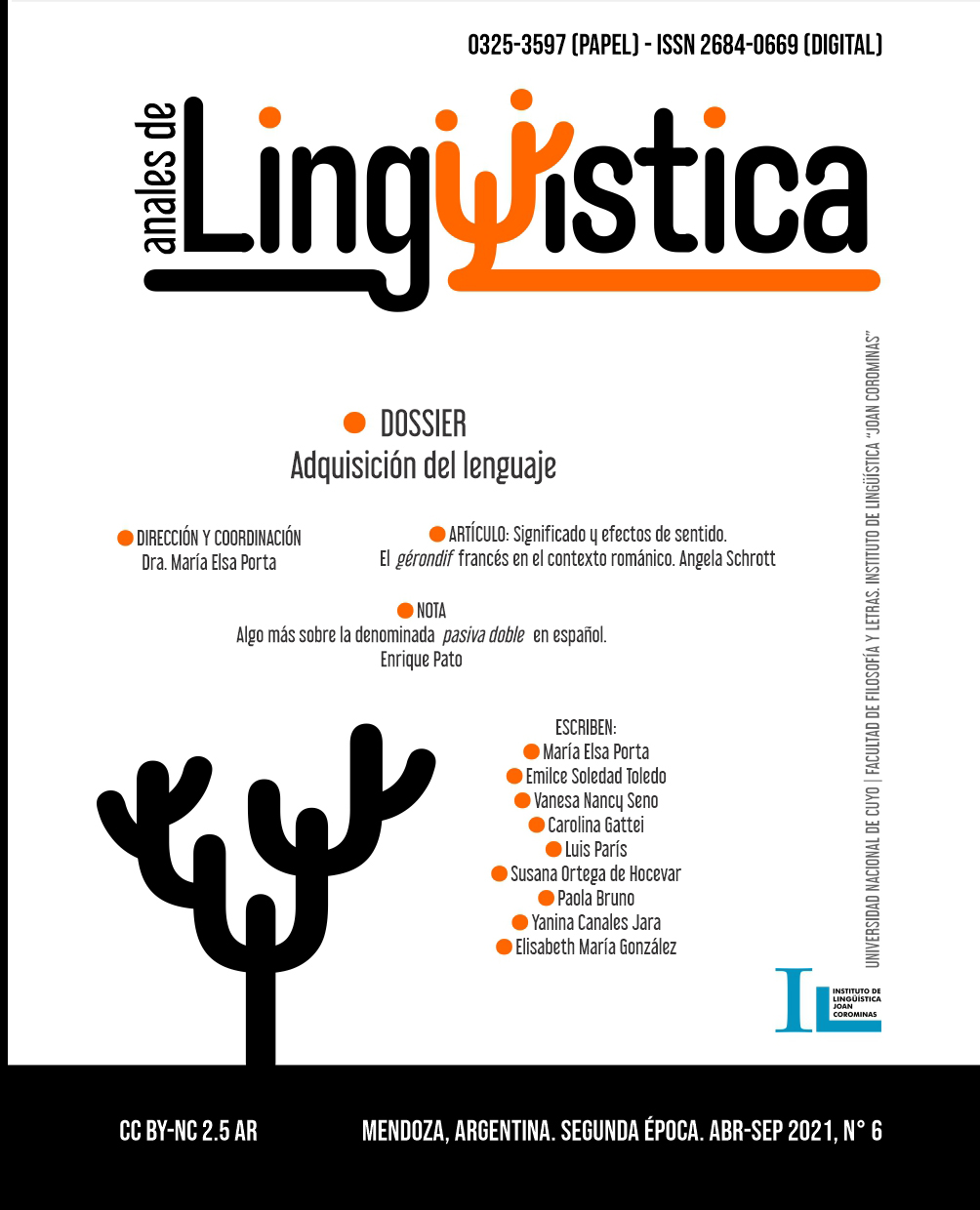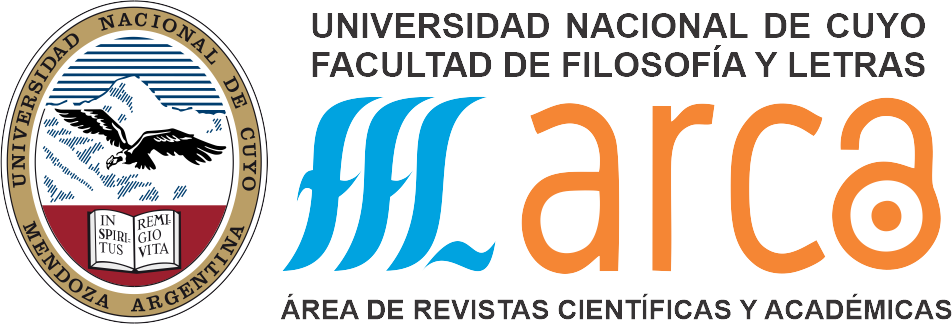Something else about the so-called double passive in spanish
Keywords:
Spanish, Grammar, Syntax, Double passive, PredicatesAbstract
This brief note on the grammar of the double passive in Spanish (fue empezada a ser construida) summarizes, at first, the two previous works published on this construction: the one by Bosque and Gallego (2011), and Krivochen and Bravo (2019), for later contribute some new data to the description of this construction. Specifically, thanks to the corpus examples, the auxiliary predicates, the auxiliated participles and the prepositions selected in the double passive are reviewed. Likewise, other minor considerations are offered around the agreement, the intercalation of adverbs and their documentation in other Romance and non- Romance languages. We conclude with the idea that the phenomenon of the double passive can be understood as another case of complex predicative formation.
References
Asociación de Academias de la Lengua Española (2010). Diccionario de americanismos. Lima: Santillana.
Bosque, I. y Gallego, Á. (2011). «Spanish Double Passives and Related Structures».
Linguística. Revista de Estudos Linguísticos da Universidade do Porto, 6(1), 9-50.
Chomsky, N. (2000). «Minimalist inquiries: The framework». En: R. Martin et al. (eds.), Step by step. Essays on minimalist syntax in honor of Howard Lasnik (pp. 89-155). Cambridge, MA: MIT Press.
Chomsky, N. (2001). «Derivation by phase». En: M. Kenstowicz (ed.), Ken Hale: A life in language (pp. 1-52). Cambridge, MA: MIT Press.
Cinque, G. (2003). «The Interaction of Passive, Causative, and “Restructuring” in Romance». En: Ch. Tortora (dir.), The Syntax of Italian Dialects (pp. 50-66). Oxford/ New York: Oxford University Press.
Davies, M. Corpus del español: Web/ Dialectos. Provo, UT: Brigham Young University. http://www.corpusdelespanol.org
Fábregas, A. (2019). «Periphrases in Spanish: properties, diagnostics and research questions». Borealis: An International Journal of Hispanic Linguistics, 8(2), 1-82.
Hobæk Haff, M. y Lødrup, H. (2016). «Où en est le « passif long » en Français ?». Syntaxe et sémantique, 17, 153-173.
Krivochen, D. G. y Bravo, A. (2019). «Pasivas adelantadas, dobles pasivas y auxiliares de pasiva léxicos». Revista de la Sociedad Española de Lingüística, 49, 73-100.
Real Academia Española. Banco de datos (CORDE). Corpus diacrónico del español. Madrid: RAE. http://www.rae.es
Real Academia Española. Banco de datos (CREA). Corpus de referencia del español actual. Madrid: RAE. http://www.rae.es
Real Academia Española. Corpus del español del siglo XXI (CORPES XXI), [versión 0.9]. Madrid: RAE. http://www.rae.es
Real Academia Española y Asociación de Academias de la Lengua Española (2009).
Nueva gramática de la lengua española. Madrid: Espasa.
Wurmbrand, S. (2004). «Two Types of Restructuring – Lexical vs. Functional». Lingua, 114(8), 991-1014.
Wurmbrand, S. (2016). «Complex Predicate Formation via Voice Incorporation». En: Nash, L. y Samvelian, P. (eds.), Approaches to Complex Predicates (pp. 248-290). Leiden: Brill.
Downloads
Published
How to Cite
Issue
Section
License
Copyright (c) 2021 Anales de Lingüística
Esta obra está bajo una Licencia Creative Commons Atribución 2.5 Argentina.
Los/as autores/as que publican en esta revista están de acuerdo con los siguientes términos:
1. Los/as autores conservan los derechos de autor y garantizan a la revista el derecho de ser la primera publicación del trabajo bajo una licecncia Creative Commons Atribución 2.5 Argentina (CC BY 2.5 AR) . Por esto pueden compartir el trabajo con la referencia explícita de la publicación original en esta revista.
2. Anales de lingüística permite y anima a los autores a difundir la publicación realizada electrónicamente, a través de su enlace y/o de la versión postprint del archivo descargado de forma independiente.
3. Usted es libre de:
Compartir — copiar y redistribuir el material en cualquier medio o formato
Adaptar — remezclar, transformar y construir a partir del material para cualquier propósito, incluso comercialmente.












